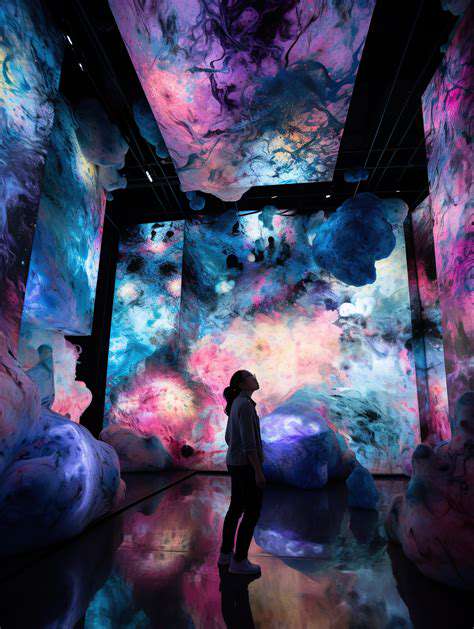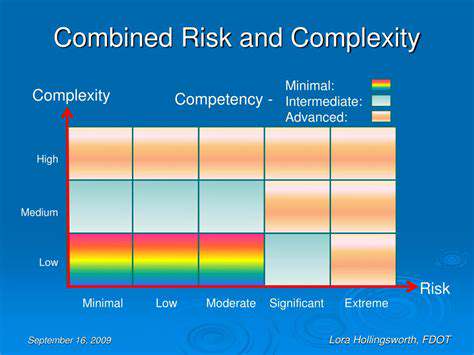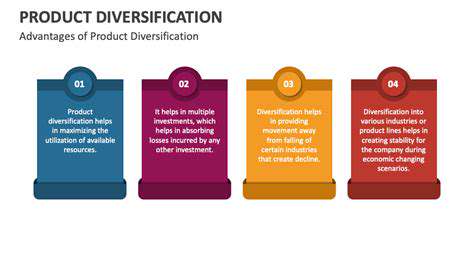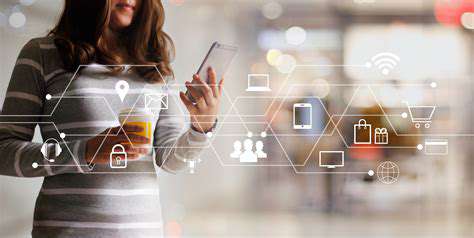Beyond the Static Image: Enhancing the Shopping Experience
Shopping online has long been a game of guesswork. Flat images and vague descriptions leave customers squinting at screens, trying to imagine how a product might look or feel in real life. This outdated approach creates frustration and hesitation, often leading to abandoned carts and unhappy buyers. But now, a revolution is transforming digital storefronts into vibrant, interactive spaces where products come alive before your eyes.
Picture this: instead of staring at a static photo of a sofa, you can rotate it 360 degrees, zoom in on the fabric texture, and even see how it would look in your living room. This isn't futuristic fantasy - it's the new standard that forward-thinking retailers are adopting today. For items like jewelry, where craftsmanship matters, customers can examine every facet and detail as if holding it in their hands. The result? More confident purchases and far fewer returns.
Virtual Reality (VR) and Augmented Reality (AR): The New Retail Frontiers
Remember when VR headsets were just for gamers? Those days are gone. Now, slipping on a headset can transport you to a virtual Apple Store where you can pick up and examine the latest gadgets. The magic happens when digital objects respond naturally to your movements - turning, tilting, and reacting just like their physical counterparts. Early adopters like IKEA are already seeing dramatic results, with customers spending more time engaging with products and making bigger purchases.
AR works differently but just as powerfully. Point your phone at your empty wall, and watch as potential artwork options appear exactly where they'd hang. This try before you buy approach solves the biggest headache of online shopping: uncertainty. Cosmetic companies report that customers using virtual try-on features are significantly more likely to complete purchases, proving that seeing really is believing.
Interactive 3D Models and Product Visualization: Bringing Products to Life
Static product shots are becoming as outdated as flip phones. The new gold standard? Fully interactive 3D models that respond to your every command. Want to see how that espresso machine's water tank opens? Spin it around and peek inside. Curious about a watch's clasp mechanism? Zoom in until the engineering details become clear. This level of inspection was previously only possible in physical stores - now it's available anytime, anywhere.
Car manufacturers have particularly benefited from this technology. Prospective buyers can now explore every inch of a vehicle's interior, from the stitching on the seats to the layout of the dashboard controls. When customers can satisfy their curiosity this thoroughly online, they arrive at dealerships ready to buy, not just browse.
The Future of Customer Engagement: Building Deeper Connections
The most successful brands understand that shopping isn't just transactional - it's emotional. By creating digital spaces where customers can play, explore, and interact, companies foster the kind of brand loyalty that static websites never could. Imagine virtual styling sessions where fashion experts guide you through seasonal trends, or cooking demonstrations where you can virtually handle the cookware being used.
These innovations aren't just bells and whistles - they're reshaping consumer expectations. Soon, the question won't be Why should we implement these features? but How can we afford not to? As the digital and physical shopping worlds continue to merge, the retailers who thrive will be those that create the most memorable, engaging experiences.
Virtual Showrooms and Interactive Product Exploration
Immersive Experiences for Enhanced Customer Engagement
Virtual showrooms are revolutionizing the e-commerce landscape by demolishing the barriers between online and in-store experiences. No longer constrained by geography or store hours, customers can wander through meticulously designed digital spaces at their convenience. The ability to view products in context - seeing how furniture fits in room settings or how clothing moves on avatars with your body type - closes the imagination gap that plagues traditional online shopping.
High-ticket items particularly benefit from this approach. Luxury watch brands report that customers who engage with 3D product tours spend 40% more time considering purchases and demonstrate higher conversion rates. When you can inspect the second-hand movement of a $10,000 timepiece as if holding it in your hands, hesitation gives way to desire.
Tailored Interactions and Personalized Shopping Journeys
The true power of virtual showrooms lies in their adaptability. Advanced systems remember your preferences, suggesting complementary items based on your browsing history and even adjusting lighting conditions to show products in your local time of day. It's like having a personal shopper who knows your taste better than you do.
Data from these interactions provides invaluable insights. Retailers can identify which product angles customers examine most, which features spark the longest engagement, and where confusion arises. This feedback loop creates a constantly improving shopping experience that becomes more intuitive with each visit.
The most effective virtual showrooms incorporate multiple interaction layers:- 360° views that reveal every angle- X-ray features showing internal components- Size comparison tools using augmented reality- Material close-ups with zoom capabilities
This comprehensive approach doesn't just mimic physical shopping - in many ways, it surpasses it by removing social pressure and allowing unlimited inspection time.
Acupuncture, a centuries-old healing practice, has found new relevance in athletic recovery. Research suggests that strategic needle placement can enhance blood flow to overworked muscles, potentially speeding recovery times. Many professional sports teams now include TCM practitioners in their medical staff, recognizing the value of this complementary approach.

The Future of Retail: Beyond the Click-and-Ship Model
Embracing Omnichannel Experiences
Today's consumers refuse to be pigeonholed into single shopping channels. They expect to start their journey on mobile, continue on desktop, and finish in-store - all without missing a beat. The winners in this new retail landscape are those who've erased the seams between digital and physical experiences.
Consider how Warby Parker transformed eyeglass shopping. Customers can select frames online, schedule in-store fittings, then adjust their prescriptions later via app. This fluidity turns what was once a frustrating process into a delightfully simple one.
Personalized Recommendations and AI-Powered Shopping
Artificial intelligence has moved far beyond basic customers who bought this... suggestions. Modern systems analyze thousands of data points to predict needs you haven't even recognized yet. A skincare brand might notice you always shop before vacations and proactively suggest travel-sized sunscreens. A pet supply retailer could remind you when it's time to reorder your dog's favorite food based on past purchase intervals.
The most sophisticated implementations use computer vision to analyze your wardrobe from social media photos, suggesting pieces that complement your existing style. This level of personalization creates such value that customers gladly share more data, creating a virtuous cycle of ever-better recommendations.
The Rise of Augmented Reality (AR) and Virtual Reality (VR)
AR and VR technologies are solving the I need to see it to believe it dilemma that's plagued e-commerce since its inception. Home improvement stores report that customers using AR room visualizers make larger purchases with more confidence. The ability to see how that sectional sofa really fits in your living room removes the single biggest barrier to furniture sales online.
Virtual reality takes this further by creating complete brand experiences. Automakers now offer VR test drives of vehicles not yet on lots. Cosmetic counters provide virtual makeovers showing how products will look hours after application. These immersive experiences don't just inform - they create emotional connections that drive brand loyalty.
Sustainable Practices and Ethical Considerations
Modern shoppers vote with their wallets, and they're increasingly choosing brands that align with their values. Transparency isn't just nice-to-have anymore - it's a business imperative. Companies like Patagonia have built loyal followings by making their supply chains an open book, from factory conditions to material sourcing.
Innovative solutions are emerging at every level:- Blockchain tracking for authenticity and ethical sourcing- Biodegradable packaging that dissolves after use- Circular economy programs that repurpose used productsThese initiatives aren't just good PR - they're becoming key differentiators in crowded markets.
The Importance of Data Analytics and Customer Insights
Data is the lifeblood of modern retail, but it's not about collecting more - it's about deriving smarter insights. The most successful retailers use predictive analytics to stay one step ahead of customer needs. A grocery chain might adjust inventory based on local weather forecasts (more barbecue supplies before a heatwave). A fashion retailer could shift production based on social media trend analysis.
The key is connecting disparate data points into actionable intelligence. When a customer's browsing behavior, purchase history, and even calendar appointments inform real-time recommendations, you create experiences that feel almost psychic in their relevance.
The Future of Retail Stores: Beyond Transactional Spaces
Physical stores are being reimagined as community hubs rather than mere shopping destinations. Apple's Today at Apple sessions transform stores into creative studios. REI offers outdoor skills workshops alongside its product displays. These experiences create emotional connections that pure e-commerce players struggle to match.
The stores of tomorrow might feature:- Coffee bars where you can work while your purchases are gathered- Demonstration kitchens showing products in action- Interactive displays that teach rather than just sellBy providing value beyond transactions, physical retail is carving out an essential role in the digital age.











